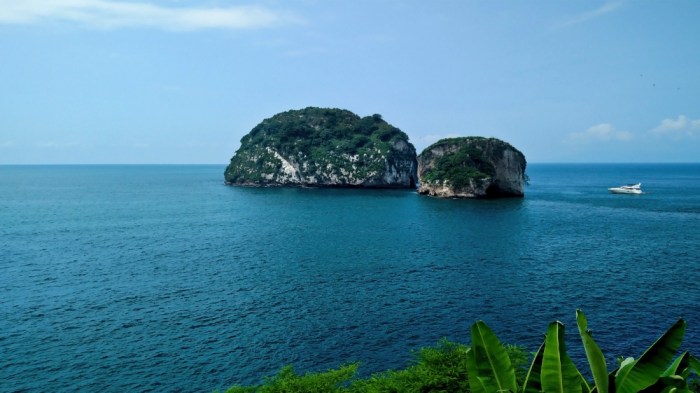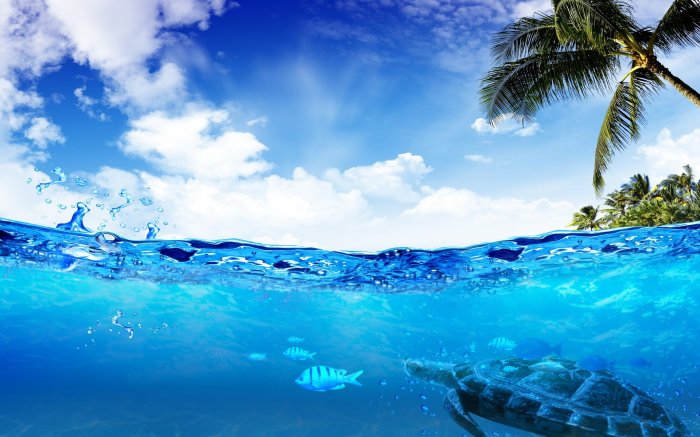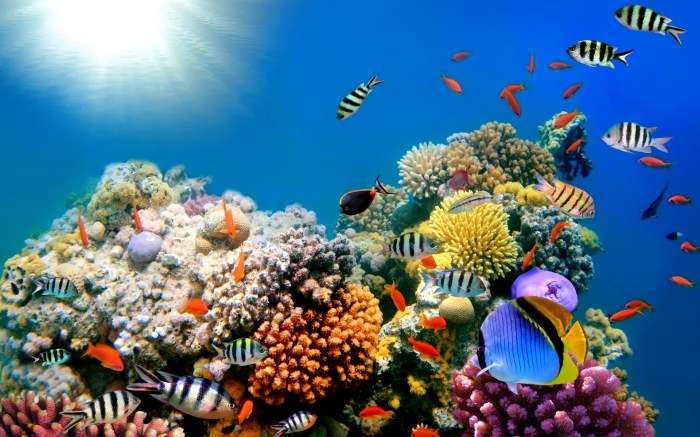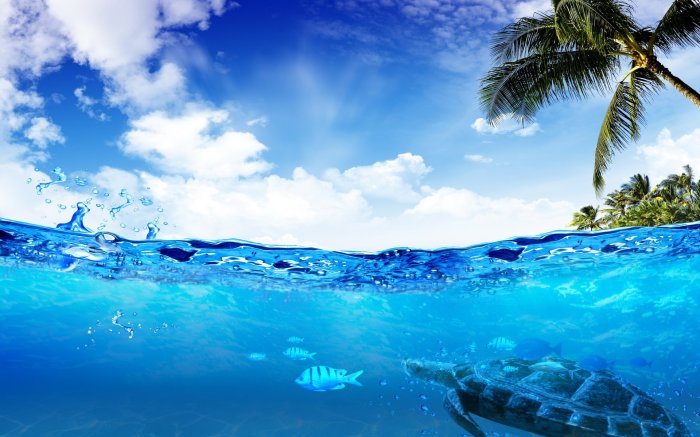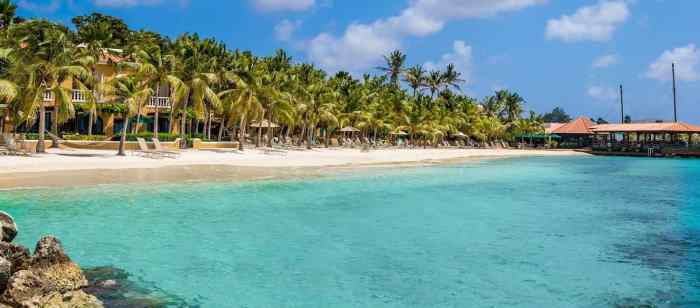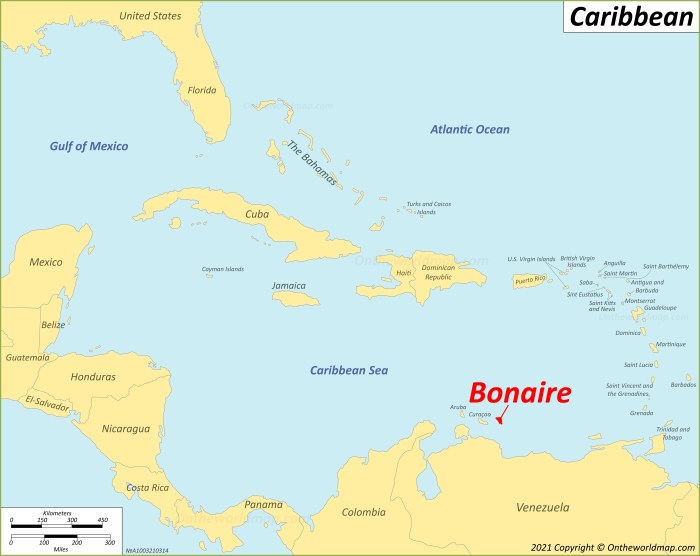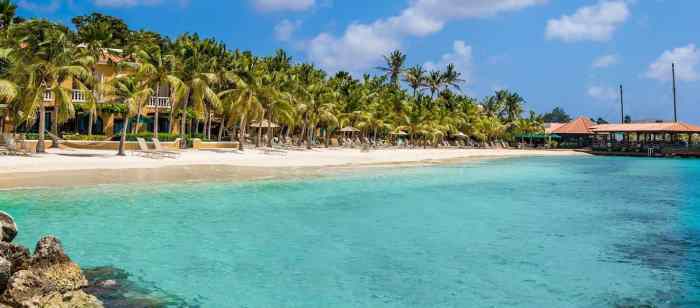Belize vs Great Barrier Reef scuba diving: Which underwater paradise reigns supreme? This deep dive explores the captivating contrasts between Belize’s vibrant coral reefs and the awe-inspiring expanse of the Great Barrier Reef. We’ll dissect the unique diving experiences, marine life encounters, and logistical considerations, equipping you with the knowledge to choose the perfect destination for your next underwater adventure.
Belize, with its crystal-clear waters and diverse coral formations, offers a close-up encounter with a kaleidoscope of marine life. The Great Barrier Reef, a UNESCO World Heritage site, boasts an unparalleled biodiversity and stunning coral formations. Both locations offer unforgettable experiences, but which one will resonate most with your diving aspirations?
Scuba Diving in Belize and the Great Barrier Reef
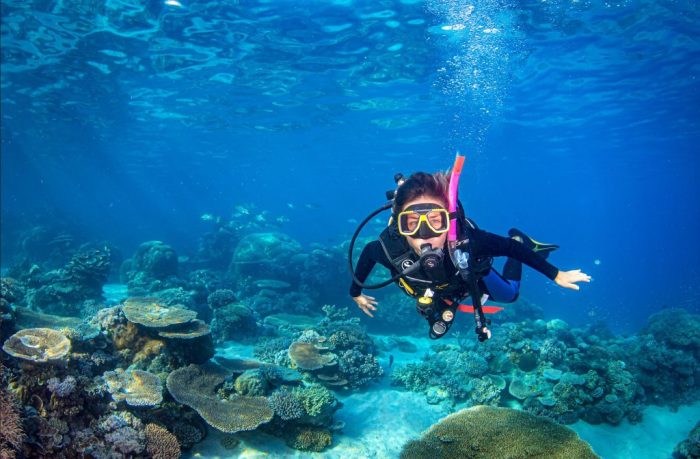
Belize and the Great Barrier Reef are two of the world’s premier scuba diving destinations, each offering unique and unforgettable experiences. While both boast vibrant coral reefs teeming with marine life, significant differences exist in the diving landscapes, the types of encounters, and the overall atmosphere. This exploration delves into the distinct charms of each location, highlighting what makes them so captivating for divers.
Diving Experiences: Belize
Belize’s barrier reef system, a UNESCO World Heritage site, is renowned for its incredible marine biodiversity. The warm, clear waters of the Caribbean Sea provide excellent visibility, allowing divers to witness a breathtaking array of colorful fish, coral formations, and even larger marine animals like sharks and rays. The reefs are relatively shallow in some areas, making them ideal for beginner divers, while deeper sections offer thrilling explorations for experienced divers.
Diving Experiences: Great Barrier Reef
The Great Barrier Reef, the world’s largest coral reef system, stretches over 2,300 kilometers along Australia’s northeastern coast. This vast expanse offers a diverse range of diving environments, from shallow lagoons to deep drop-offs. The sheer size and complexity of the reef system mean that divers can encounter a remarkable variety of marine life, including whale sharks, manta rays, turtles, and numerous species of colorful fish.
The strong currents and varied depths offer both challenges and rewards for divers of all levels.
Key Differences in Diving Environments
One crucial distinction lies in the water clarity. Belize’s Caribbean waters typically boast exceptionally clear visibility, often exceeding 30 meters, providing unparalleled opportunities for observing intricate reef formations and the details of marine life. Conversely, the Great Barrier Reef’s water clarity can vary depending on the location and time of year, sometimes affected by currents and weather conditions.
While visibility may not always be as consistent as in Belize, the sheer scale of the reef system and the diversity of marine life make up for it.
Overall Appeal of Belize
Belize’s appeal stems from its combination of pristine coral reefs, excellent visibility, and a generally relaxed atmosphere. The shallow, accessible reefs cater to divers of all skill levels, while the presence of larger marine life adds an exciting element to the experience. Many dive operators in Belize offer guided tours, providing insights into the local marine ecosystem and enhancing the educational aspect of the dive.
Overall Appeal of the Great Barrier Reef
The Great Barrier Reef captivates divers with its vastness and the potential for encountering rare and impressive marine life. The diversity of the reef’s environment, from shallow lagoons to deep channels, creates a constantly changing and dynamic diving experience. The opportunity to encounter whale sharks, manta rays, and other large marine animals, along with the diverse coral formations, makes it a bucket-list destination for many divers.
Diving Sites & Conditions
Belize and the Great Barrier Reef, while both renowned for their underwater beauty, offer distinct diving experiences. Understanding the differences in dive sites, water conditions, and marine life encounters is crucial for choosing the right destination for your diving adventure. This section delves into the specifics of these diverse locations.
Dive Site Variety
Belize boasts a variety of dive sites, catering to different experience levels. From shallow coral reefs perfect for beginners to deep walls and wrecks for experienced divers, Belize provides a spectrum of options. The Great Barrier Reef, encompassing a vast expanse, presents a similar diversity, with numerous sites offering unique features and challenges. The sheer size of the reef allows for a huge range of conditions and marine life encounters, accommodating both novice and seasoned divers.
Water Conditions
Water temperatures and visibility play a significant role in the diving experience. Belize’s waters generally have a warm temperature year-round, suitable for comfortable diving. Visibility can vary, but often remains excellent, especially during the dry season. The Great Barrier Reef, influenced by currents and weather patterns, experiences more variability in water conditions. While the average temperature remains warm, visibility and current strength can fluctuate more significantly than in Belize.
Strong currents can be expected at certain times of the year, especially in the deeper parts of the reef.
Marine Life Encounters
Belize’s vibrant coral reefs are teeming with diverse marine life, including colourful fish, sharks, rays, and turtles. The numerous wrecks and wall dives often attract diverse species, creating unique opportunities for encounters with larger marine life. The Great Barrier Reef, the world’s largest coral reef system, provides an even greater spectacle of marine biodiversity. The immense size of the reef supports an incredible variety of species, including colourful fish, diverse coral types, marine mammals, and large pelagic fish.
Diving Techniques
Different dive sites necessitate varying diving techniques. In Belize, navigation through coral gardens and shallow reefs often requires a gentle, observant approach. Deep dives or dives on walls in Belize often necessitate special techniques, including dive planning and appropriate equipment selection. Divers on the Great Barrier Reef must often adapt to varying currents, and site knowledge is critical for safely exploring the diverse reef structures.
Comparison Table
| Location | Type of Site | Marine Life | Water Conditions |
|---|---|---|---|
| Belize | Coral reefs, walls, wrecks | Diverse fish, sharks, rays, turtles | Warm, good visibility, variable currents |
| Great Barrier Reef | Coral reefs, outer reefs, drop-offs | Massive biodiversity, including colourful fish, marine mammals | Warm, variable visibility and currents, potentially strong currents |
Marine Life & Biodiversity
Belize and the Great Barrier Reef boast incredible marine biodiversity, attracting divers and snorkelers alike. From vibrant coral reefs teeming with life to deep-sea trenches, these regions offer a window into the spectacular diversity of ocean ecosystems. Understanding the unique species and habitats is crucial for appreciating the ecological importance of these areas and the conservation efforts needed to protect them.The sheer variety of marine life in both Belize and the Great Barrier Reef reflects the unique environmental conditions and ecological niches present in each location.
Different species have adapted to thrive in these diverse ecosystems, forming intricate food webs and contributing to the overall health of the ocean. These habitats are not just beautiful, they are essential for the planet’s well-being.
Diverse Marine Species in Belize
Belize’s coral reefs are renowned for their vibrant colors and abundant marine life. The warm, shallow waters provide ideal conditions for a wide range of species. Numerous species of fish, including parrotfish, angelfish, and snappers, thrive in these reefs. Diverse invertebrate life such as sea turtles, seahorses, and a multitude of colorful coral species are also found in Belizean waters.
This vibrant marine life creates a captivating underwater spectacle.
Unique Ecosystems and Their Ecological Significance
The Great Barrier Reef, a UNESCO World Heritage site, is the largest coral reef system in the world. Its vast expanse supports an extraordinary array of marine life, including numerous fish species, sea turtles, dolphins, and whales. The diverse ecosystem plays a vital role in maintaining the delicate balance of the ocean’s food web. The reef provides shelter and breeding grounds for numerous species, acting as a critical component of the global marine ecosystem.
The complex structure of the reef also provides a habitat for a variety of invertebrates, including crustaceans and mollusks, each with a crucial role in the reef’s intricate food web.
Conservation Efforts for Marine Life
Protecting these vital ecosystems is paramount. Both Belize and Australia, home to the Great Barrier Reef, have implemented various conservation measures to safeguard their marine life. These include establishing marine protected areas, regulating fishing practices, and promoting sustainable tourism. Stricter regulations on fishing methods and establishing protected zones within the reefs are vital steps in ensuring the long-term health of these unique ecosystems.
Community involvement and education programs play a crucial role in promoting awareness and responsible behavior.
Common Marine Species in Both Regions
Many species thrive in both Belize and the Great Barrier Reef environments. These include:
- Corals: Various species of hard and soft corals form the foundation of the reefs, providing habitat and food for many species.
- Fish: Numerous species of fish, including parrotfish, angelfish, and snappers, are common to both locations.
- Sea Turtles: Green sea turtles and other species regularly frequent both areas, utilizing the reefs for feeding and nesting.
- Sharks: Various shark species, such as reef sharks and grey reef sharks, inhabit the waters around both Belize and the Great Barrier Reef, though their presence and distribution may vary.
- Invertebrates: Many species of invertebrates, including crustaceans, mollusks, and jellyfish, are found in both areas.
Diving Experiences & Activities
Belize and the Great Barrier Reef offer diverse scuba diving experiences, catering to varying skill levels and interests. Both locations boast vibrant marine ecosystems, but their approaches to diving tours and the overall atmosphere differ. This section delves into the specifics of these experiences, comparing the available tours and highlighting the local cultures that enhance the diving experience.Diving tours in both Belize and the Great Barrier Reef cater to a wide range of needs.
From guided explorations of shipwrecks to encounters with diverse marine life, there’s something for everyone. The unique character of each location shapes the diving experience, offering distinctive insights into the underwater world.
Typical Diving Experiences
Belize and the Great Barrier Reef are renowned for their diverse marine life and impressive coral formations. Typical diving experiences often involve exploring coral reefs, observing colorful fish, and sometimes encountering larger marine mammals or sea turtles. Guided tours are common, allowing divers to learn about the local marine ecosystem and interact responsibly with the environment. Specialized dives, like night dives or wreck dives, are also available.
Types of Diving Tours
The types of diving tours available in Belize and the Great Barrier Reef reflect the unique characteristics of each location. Belize’s tours often focus on shallow coral reefs and vibrant fish populations, while the Great Barrier Reef’s tours encompass a broader spectrum, ranging from shallow reef dives to deeper dives exploring the reef’s vast expanse.
- Belize: Many tours in Belize are focused on shallow reefs, offering easy access to a wide variety of marine life. These tours often include visits to renowned sites like Hol Chan Marine Reserve, known for its abundance of fish and vibrant coral. The emphasis is on enjoying the beauty of the shallow reefs and experiencing the teeming underwater world.
- Great Barrier Reef: Diving tours in the Great Barrier Reef often involve exploring the reef’s vast expanse, ranging from shallow reefs to deeper sections, sometimes including the possibility of encountering diverse marine species. Tours may include dives to shipwrecks or other historical sites submerged within the reef.
Overall Atmosphere and Local Culture
The local culture surrounding diving significantly impacts the overall atmosphere of the experience. Belize’s diving scene often incorporates local customs and traditions, adding a unique flavour to the underwater adventure. The Great Barrier Reef, while less culturally focused on diving directly, offers a different atmosphere, characterized by a sense of vastness and awe at the sheer scale of the reef system.
- Belize: Belizean diving centers often prioritize a welcoming and community-oriented atmosphere. Local guides frequently share insights into Belizean culture and history, enriching the experience beyond the diving itself.
- Great Barrier Reef: The Great Barrier Reef offers a more globalized experience. Diving centers often cater to a diverse range of nationalities, with a focus on providing a safe and informative diving experience within the magnificent natural environment.
Accessibility for Different Experience Levels
Both locations cater to divers of varying experience levels. Belize, with its range of shallow dive sites, is ideal for beginners. The Great Barrier Reef offers a more extensive selection of dive sites, accommodating experienced divers as well as those seeking a more challenging experience.
| Diving Tour Option | Cost (USD) | Duration (hours) | Experience Level |
|---|---|---|---|
| Belize – Shallow Reef Discovery | 150-200 | 4 | Beginner/Intermediate |
| Belize – Wreck Dive | 250-300 | 6 | Intermediate/Advanced |
| Great Barrier Reef – Guided Reef Exploration | 250-350 | 6 | Beginner/Intermediate |
| Great Barrier Reef – Deep Reef Dive | 350-450 | 8 | Intermediate/Advanced |
Cost & Logistics
Choosing between scuba diving in Belize and the Great Barrier Reef involves more than just the stunning visuals. Crucial factors like budget, travel time, and necessary permits influence the decision. This section delves into the financial and logistical aspects of both destinations, providing a clear comparison for prospective divers.
Cost Comparison
The cost of scuba diving varies significantly between Belize and the Great Barrier Reef, influenced by factors such as accommodation quality, diving package inclusions, and travel distances. Belize, often touted for its affordability, generally presents a lower cost profile for diving packages compared to the Great Barrier Reef. However, this is not a hard and fast rule and depends heavily on the specific choice of package and time of year.
| Diving Package Feature | Belize (Example) | Great Barrier Reef (Example) |
|---|---|---|
| 5-Day Diving Package (Entry-Level) | $1,200 – $1,500 | $1,800 – $2,500 |
| 5-Day Diving Package (Luxury) | $2,000 – $3,000 | $3,000 – $5,000+ |
| International Flights (Example: USA) | $500 – $1,000 (round trip) | $800 – $1,500 (round trip) |
| Accommodation (Mid-Range) | $100 – $200/night | $200 – $400+/night |
The table above provides a simplified comparison. Specific prices depend heavily on the chosen dive operator, the level of inclusions in the package (e.g., meals, boat transfers, equipment rental), and the time of year (peak season usually commands higher prices). For instance, a more extensive package in Belize might include meals, equipment rental, and shore excursions, reducing the individual costs.
Conversely, a luxury package in the Great Barrier Reef could include premium accommodation, gourmet meals, and private boat charters, resulting in significantly higher prices.
Permits and Regulations
Both Belize and the Great Barrier Reef require adherence to specific regulations and permits for scuba diving. These regulations vary depending on the type of dive operation (e.g., shore dives versus boat dives) and the specific location. Essential permits and licenses typically include the necessary certifications for divers and any required permits for the diving operation itself. Divers must be aware of these guidelines before traveling to either location.
Choosing between Belize and the Great Barrier Reef for scuba diving is tough! Both boast incredible marine life, but Belize’s vibrant coral reefs might be a little more accessible for beginners. However, if you’re finding yourself feeling bloated after a trip, be sure to check out some travel tips on how to manage that discomfort travel tips why do i feel bloated after.
Ultimately, the best choice depends on your diving experience and what you’re looking for in a tropical adventure. Maybe both are on your bucket list!
- Belize requires divers to possess a valid PADI or equivalent certification, which must be presented for entry into the country. Specific dive operation permits might also be required depending on the type of dive.
- The Great Barrier Reef, administered by the Australian government, mandates similar certification requirements. Specific permits might be needed for particular diving locations or activities, such as night diving or wreck diving.
Logistics of Travel and Accommodation
The logistics of reaching Belize and the Great Barrier Reef vary considerably. Travel times and the availability of transportation play a major role in the overall experience. Accommodation choices, from budget-friendly guesthouses to luxury resorts, are diverse and tailored to different preferences and budgets.
While both Belize and the Great Barrier Reef offer incredible scuba diving, the experiences differ. Belize’s vibrant coral reefs and diverse marine life are spectacular, but the Great Barrier Reef, with its sheer scale, offers a different kind of awe-inspiring underwater world. This unique hotel concept, like the ones explored in the hotel within a hotel concept , could potentially revolutionize the way we experience these destinations.
Ultimately, the best choice depends on your personal preferences, but both promise unforgettable scuba diving adventures.
- Belize is accessible via international flights to the Philip S.W. Goldson International Airport (BZE). From there, internal transportation, including taxis or shuttle services, can be utilized to reach dive centers and accommodations.
- The Great Barrier Reef is situated off the coast of Queensland, Australia, accessible via flights to Cairns or other nearby airports. Travel to dive sites often involves boat transfers, which can range from small vessels for local dives to larger vessels for longer trips to more remote locations. Accommodation choices range from resorts to hotels, and are generally more expensive in comparison to Belize.
Scuba Diving Equipment & Gear
Choosing the right scuba diving equipment is crucial for a safe and enjoyable experience. Proper gear ensures comfort, performance, and minimizes the risk of accidents. This section details the standard equipment used in Belize and the Great Barrier Reef, along with maintenance tips and cost comparisons.
Standard Scuba Diving Equipment
Essential scuba diving equipment includes a wetsuit or drysuit, a scuba tank, a regulator, a buoyancy control device (BCD), and a mask, snorkel, and fins. The specific types and features of these items can vary based on the dive site conditions and the diver’s experience level. For example, a diver in cold waters might opt for a thicker wetsuit, while a diver in warm waters might prefer a thinner, more flexible suit.
Wetsuits and Drysuits
Wetsuits and drysuits are essential for maintaining body temperature in the water. Wetsuits trap a layer of water against the skin, which helps insulate the body. Drysuits, on the other hand, keep the body completely dry, providing greater insulation and allowing for use in colder conditions or rougher waters. Wetsuits are typically more affordable and easier to maintain.
Drysuits offer more protection against the elements but require more care and potentially specialized knowledge to use.
Scuba Tanks and Regulators
Scuba tanks, typically made of steel or aluminum, hold compressed air. Regulators are critical for controlling the flow of air from the tank to the diver’s mouth. The quality and type of regulator can affect breathing comfort and performance during dives. Tank size and pressure ratings are important factors to consider based on the planned dive duration and depth.
Buoyancy Control Devices (BCDs)
BCDs are essential for maintaining neutral buoyancy, enabling divers to ascend or descend without expending significant effort. A well-fitting BCD provides comfort and control throughout the dive. Features like inflation and deflation systems, as well as pockets for gear, should be considered when choosing a BCD.
Masks, Snorkels, and Fins
A high-quality mask ensures clear vision underwater. Snorkels allow for easy breathing while snorkeling or during shallow dives. Fins enhance propulsion and maneuverability. Proper fit and comfort are paramount for these accessories.
Equipment Maintenance and Care
Regular maintenance is crucial for ensuring the optimal performance and safety of scuba diving equipment. This includes inspecting the tank for corrosion, ensuring the regulator is functioning correctly, and checking the BCD for leaks or damage. Proper cleaning and drying of gear after each dive are vital to prevent the growth of mold or mildew.
Equipment Availability and Costs Comparison
| Item | Belize | Great Barrier Reef | Notes |
|---|---|---|---|
| Wetsuit (3mm) | $100 – $250 | $120 – $300 | Prices vary depending on brand and features. |
| Scuba Tank (100 cu ft) | $150 – $200 | $170 – $250 | Rental prices vary based on rental duration and condition of tank. |
| Regulator Set | $150 – $300 | $180 – $350 | Rental and purchase prices vary based on brand and features. |
| BCD | $150 – $350 | $180 – $400 | Rental and purchase prices vary based on brand and features. |
| Mask, Snorkel, Fins | $50 – $150 | $60 – $180 | Sets are often available at various price points. |
The table above provides a general comparison of equipment costs in Belize and the Great Barrier Reef. Actual prices may vary based on specific retailers, rental durations, and equipment specifications.
Safety & Precautions
Scuba diving, while exhilarating, carries inherent risks. Understanding safety procedures and potential hazards is paramount for a safe and enjoyable experience. Proper training, adherence to regulations, and awareness of emergency protocols are crucial for minimizing risks in both Belize and the Great Barrier Reef.
Essential Safety Procedures
Safe scuba diving hinges on meticulous preparation and adherence to established procedures. Dive operators, in both Belize and the Great Barrier Reef, play a critical role in ensuring a safe dive environment. They conduct pre-dive briefings that cover potential hazards, emergency procedures, and the importance of following dive guidelines. Always review and understand the dive operator’s specific safety protocols before entering the water.
While debating Belize vs. Great Barrier Reef diving, accessibility is a crucial factor. Thinking about the best national parks for persons with disabilities, like those with mobility limitations, is key to ensuring everyone can enjoy the beauty of these underwater wonders. For example, the careful design of paths and facilities in these parks allows for seamless exploration, and this same principle applies to the best dive locations for various needs.
Ultimately, the best choice between Belize and the Great Barrier Reef depends on individual needs and preferences, and understanding the accessibility options at each location. best national parks for persons with disabilities are a great starting point for anyone looking to dive safely and comfortably.
Maintaining buoyancy control and staying within your limits are vital to avoid compromising your safety.
Potential Risks and Hazards
Several factors can affect the safety of a scuba dive. In Belize, the possibility of encounters with marine life, including currents and unpredictable weather patterns, exists. The Great Barrier Reef presents its own challenges, including strong currents, potentially dangerous marine creatures, and coral conditions that might lead to injuries. The depth and visibility of the diving sites also influence risk levels.
Adequate training and experience are essential to mitigate these risks.
Emergency Procedures and Protocols, Belize vs great barrier reef scuba diving
In the event of an emergency, prompt and effective action is crucial. Divers should be familiar with the emergency procedures and protocols Artikeld by their dive operator. Knowing the location of emergency equipment and the procedures for summoning assistance are paramount. Early recognition of distress signals and swift response can be critical to minimizing potential harm.
Emergency Contacts and Procedures
| Location | Emergency Contacts | Emergency Procedures |
|---|---|---|
| Belize | Dive Operator Contact Information, Local Emergency Services Numbers | Follow operator’s emergency protocols, use dive buddy system, signal for assistance, conserve energy |
| Great Barrier Reef | Dive Operator Contact Information, Local Emergency Services Numbers, Marine Park Authority Contact | Follow operator’s emergency protocols, use dive buddy system, signal for assistance, conserve energy, notify park authority in case of reef damage. |
Travel & Accommodation
Planning your scuba diving trip to either Belize or the Great Barrier Reef requires careful consideration of travel logistics and accommodation choices. The journey itself can be an integral part of the experience, and the atmosphere of your chosen destination will significantly impact your overall enjoyment. Choosing the right accommodation will ensure comfort and convenience while immersing you in the local culture.The diverse range of accommodations available caters to varying budgets and preferences.
From budget-friendly guesthouses to luxurious resorts, you’ll find options that meet your needs. Factors such as location, amenities, and the overall ambiance of the accommodation are critical to your experience. The atmosphere of the region, whether it’s the laid-back charm of a Belizean village or the vibrant energy of a bustling Great Barrier Reef resort, will color your memories.
Travel Options to Belize
Belize is easily accessible via international flights into Philip S.W. Goldson International Airport (BZE). Connecting flights are readily available from major hubs in North America, Central America, and even Europe. From the airport, various transportation options are available, including taxis, shuttles, and rental cars. The ease of getting around Belize is another important factor to consider.
Travel Options to the Great Barrier Reef
Access to the Great Barrier Reef is primarily through flights into Cairns Airport (CNS) in Queensland, Australia. Domestic flights and ferries are common methods of reaching the various islands and dive sites within the reef. Consider the time it takes to reach your chosen dive location and how this impacts your overall diving schedule.
Accommodation Options in Belize
Belize offers a range of accommodation options, from budget-friendly guesthouses and hostels to upscale resorts. The country’s rich Mayan history and cultural heritage are reflected in many accommodations. Many offer opportunities for cultural interaction and learning about Belizean traditions.
Accommodation Options in the Great Barrier Reef
The Great Barrier Reef area boasts numerous accommodations, catering to a variety of tastes and budgets. The choice depends on your preference for secluded islands, bustling resorts, or more remote locations. Many resorts offer direct access to dive sites, minimizing travel time and maximizing your diving time.
Local Atmosphere and Cultural Experiences
Belize offers a vibrant and welcoming atmosphere, rich in Mayan culture and traditions. Interaction with local communities provides opportunities for experiencing authentic Belizean life. The local atmosphere is typically laid-back and friendly, creating a comfortable and immersive environment.The Great Barrier Reef area has a diverse and welcoming atmosphere, influenced by the various cultures that have shaped the region.
Opportunities to interact with locals and immerse yourself in the area’s history and traditions enhance the experience.
Tips for Choosing the Best Accommodation
Consider the proximity of the accommodation to dive sites and transportation options. Review amenities offered, such as restaurants, bars, or Wi-Fi access. Read online reviews and testimonials from other travelers to gain insights into the accommodation’s quality and atmosphere. It’s important to research and compare before making a decision.
Accommodation Comparison Table
| Accommodation Type | Cost (USD) | Location | Amenities |
|---|---|---|---|
| Budget-Friendly Guesthouse (Belize) | $30-50/night | San Ignacio | Basic rooms, shared bathrooms, Wi-Fi |
| Mid-Range Resort (Belize) | $80-150/night | Placencia | Private rooms, swimming pool, restaurant, dive center access |
| Luxury Resort (Great Barrier Reef) | $200+/night | Hamilton Island | Ocean views, private balconies, fine dining, multiple dive facilities |
| Eco-lodge (Belize) | $70-120/night | Caye Caulker | Eco-friendly practices, close to beaches, diving facilities |
Final Review: Belize Vs Great Barrier Reef Scuba Diving
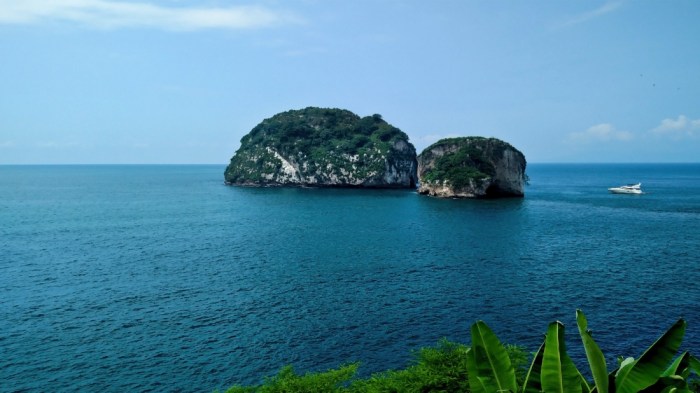
Ultimately, the best destination for scuba diving depends on individual preferences. Belize shines with its accessibility and relatively affordable options, while the Great Barrier Reef boasts unparalleled biodiversity and stunning coral formations. Whether you’re a seasoned diver or a novice, both locations promise unforgettable encounters with the vibrant underwater world. This comparison provides a comprehensive overview to guide your choice and help you plan the perfect scuba diving getaway.
